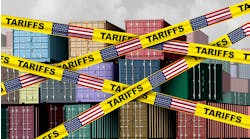In response to a complaint filed last year by Solar World and several other U.S. based solar manufacturing companies, the Commerce department ruled in May 2012 that Chinese manufacturers had been selling their panels below cost and instituted a 31% tariff on modules containing Chinese-made solar cells.
The move touched off a firestorm of controversy in the U.S. solar industry, with manufacturing companies at odds with solar developers and installers, as the first saw its business being usurped by foreign companies, the latter enjoyed the brisk business from rapid price reductions. Many in the industry, as well as outside observers, waited for the bottom to fall out. But in the intervening months, installations in the U.S. have continued to grow at a clip.
Despite the dispute, solar module prices continue to fall and supplies are stable. The U.S. market saw record growth in the second quarter of 2012, 742 MW of PV solar installed between April and June. Prices for modules have dropped about 15 percent since January, and availability has not been affected. Overall, the U.S. is on pace to install more solar this year than it did in the entire last decade, more than 2,500 MW.
Ironically, the tariffs that have been put in place are unlikely to substantially benefit U.S. manufacturers. One reason is the restrictive nature of the ruling itself. The preliminary decision announced earlier this year only places tariffs on modules than contain solar cells that were manufactured in China.
Most large Chinese manufacturers have already made contract arrangements to have cells manufactured in Taiwan (or elsewhere) and then import those cells to China to be assembled into modules. Some are already moving cell production facilities out of China. It appears that this strategy has not led to price increases on Chinese modules.
The truth of the matter is that it's going to be difficult for any PV manufacturer to survive in the coming years, mostly because as the industry matures, there will inevitably be consolidation. Consolidation is not a bad thing; it is a necessary and a normal occurrence in the evolution of any large-scale industry. There are numerous examples to cite from other industries, including the automotive, cell phone and hard drive businesses. Depending on how you count, there are currently between 300 and 500 PV manufacturing entities worldwide.
In a few years, this number will be drastically smaller, but the competition to drive down prices to the point where solar competes with grid electricity is necessary to the very survival of the industry. The companies that are able to meet that goal will prosper, and the others will become the Edsels and Nokias of the solar business…unable to survive despite their innovation and initial success.



